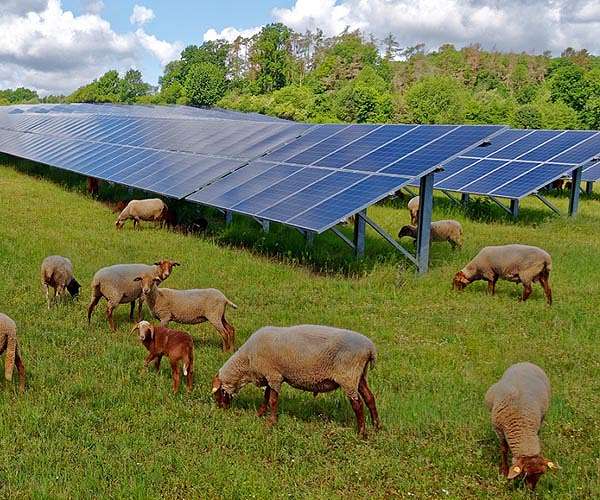Estimating agricultural land at dual-use photovoltaic sites
Researchers from the University of Cordoba have developed a new model to calculate the buildable space within solar farms equipped with dual-axis photovoltaic modules, with the aim of facilitating the transition to agrivoltaic systems where agriculture and solar energy production coexist to exist.
In Alcarras de Carla Simon, the Sole family is rethinking their underperforming peach plantation due to the advent of solar panels. This reflects the broader debate about balancing land use for renewable energy and agriculture, a topic that has received increasing attention in both cultural narratives and scientific research.
The concept of agrivoltaic energy involves the simultaneous use of land for both agriculture and photovoltaic energy generation. The university’s TEP215 – Physics for Renewable Energies research team advocates the adoption of agricultural voltaic systems. Their latest project includes a methodology to determine potential agricultural areas between solar collectors at existing installations.
“In this work, we chose a type of photovoltaic installation that already existed to see if we could redirect it and integrate crops for agricultural production into these existing facilities,” explains Rafael Lopez, professor of applied physics.
The methodology is based on theoretical simulations of solar astronomy and the spatial geometry of solar farms with biaxial panels, which rotate to track the sun like sunflowers, optimizing energy absorption. It identifies potential planting areas without obstructing the panels or casting shadows, maintaining solar efficiency.
Luis Manuel Fernandez, a researcher at the Department of Electrical and Automatic Engineering, highlighted that the model includes backtracking to prevent shadowing between panels during their daily movement.
At a specific location in Cordoba called “El Molino”, equipped with two-axis trackers and backtracking, the model showed that 74% of the land between the panels can support crops no larger than 1.4 meters.
This adaptable model could be applied in other locations to explore agrivoltaic potential and promote sustainable practices and profitability in both sectors, as noted by Rafael Lopez.
“This work represents an advance in the possible conversion and agrivoltaic use of existing large photovoltaic power plants, improving their sustainability, contributing to the necessary deployment of agrivoltaic energy and promoting the fight against climate change,” the researchers said.
The dual system benefits crops through the shade the panels provide, which is especially valuable in harsh climates as it helps maintain soil moisture.
Future steps include enacting relevant legislation and conducting field trials with different crops to implement this land use strategy more broadly.


